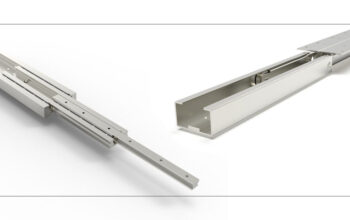The expanding construction operations coupled with infrastructure developments in Nadd Al Hamar Dubai require precise surface mapping. The superb performance capabilities of ground-penetrating radar scanning have turned it into an indispensable tool for utility detection. The method proves beneficial for construction work and building restoration because electromagnetic high-frequency waves detect objects and voids and underground utility lines under the surface. Through gpr scanning Nadd Al Hamar developers and contractors can ensure labor safety regulations while increasing work speed and dramatically reducing workplace dangers.
Safe and Non-Invasive Scanning Method
GPR scanning serves Nadd Al Hamar well because of its non-invasive nature during utility identification. GPR scanning protects ground surfaces together with existing utilities because it operates without causing any damage during detection procedures. This contrasts with traditional destructive excavation methods. A device that performs surface radio wave transmission generates immediate underground structural images for precise physical interference-free mapping.
Unlike other techniques, GPR detection maintains the original state of infrastructure structures making it more suitable for active building districts. It accomplishes accurate subsurface assessments while guaranteeing that roadways, public areas, and private properties are not disturbed. GPR scanning is a popular option for extensive utility identification projects due to its efficiency and safety.
Improving Project Effectiveness and Cutting Down on Downtime
In Nadd Al Hamar, GPR scanning elevates utility maintenance and building operations to a higher level of performance. Building contractors can leverage real-time technological data to make their decisions because site inspections are no longer needed for time-consuming durations. The accelerated project timelines and reduced project downtime become achievable features of implementing GPR scanning.
GPR scanning eliminates needless excavation and reduces guesswork by precisely locating utilities. Through this expedited method building and maintenance tasks can secure their completion deadline so projects face lower chances of delay. Precision and speed in utility detection help decrease labor expenses thus driving better efficiency in overall projects.
Precision Scanning of Concrete Floors
In Nadd Al Hamar, GPR operates frequently to both inspect concrete floors for subsurface conditions and identify buried utility systems. The key role of this application enables professionals to identify conduits together with post-tension cables and rebar that builders embed in concrete structures.
Concrete floor scanning helps construction crews to prevent damaging utilities before drilling or renovation takes place. Additionally, it offers accurate information for core drilling and cutting operations, reducing the possibility of unintentional strikes and maintaining structural integrity. Accurate concrete floor scanning improves safety and lowers the need for expensive repairs.
Avoiding Expensive Damages and Repairs
Subterranean utility damage caused by accidents might result in high repair costs and project delays. By precisely locating pipes, wires, and other subsurface objects, GPR scanning lowers the likelihood of such events.
Maintaining project budgets in Nadd Al Hamar, where infrastructure projects are constantly growing, depends on preventing unplanned utility strikes. Early detection of subterranean obstructions reduces expensive disruptions by enabling contractors to more confidently plan their drilling and excavation operations.
Assisting with Regulatory Adherence
Strict safety and legal requirements must be followed throughout excavation and construction in Nadd Al Hamar. In order to guarantee adherence to these rules, GPR scanning is essential.
GPR scanning helps developers comply with safety regulations and prevents them from facing any legal ramifications by providing them with complete subsurface data. Furthermore, GPR also aids in producing accurate as-built documentation that is important for upcoming refurbishment and maintenance works. GPR scanning for accurate utility detection guarantees that projects follow local regulations, encouraging safe and responsible building methods.
Flexibility in a Range of Uses
Because of its adaptability, GPR scanning can be used for a variety of purposes outside utility detection. It is often utilized in Nadd Al Hamar for soil analysis, archaeological surveys, and the identification of voids or structural irregularities.
Subterranean storage tank detection, pavement thickness estimation, and foundation problems recognition in infrastructure and building projects are all included in GPR scanning. In land surveying, civil engineering, and geotechnical studies, nothing can supplement the high-resolution and comprehensive data provided by GPR.
Real-Time and Time-Efficient Data Analysis
Time efficiency is yet another important benefit of GPR scanning in Nadd Al Hamar dubai. Real-time data analysis made possible by the technology enables prompt on-site decision-making.
Unlike older survey techniques that could take time to process data, GPR scanning provides immediate visual representations of subsurface features. Therefore, construction teams can rapidly modify their plans based on this quick data turnaround and save unnecessary stoppages to keep the project running.
Reducing the Effect on the Environment
An eco-friendly way to find utilities in Nadd Al Hamar is using GPR scanning. Minimizing soil disturbance through this technology avoids environmental harm because it does not require physical excavation. GPR scanning has also been useful in the preservation of infrastructure as well as natural resources by detecting utilities before any excavation. Further, it minimizes exploratory digging that disturbs vegetation and causes soil erosion. Its other characteristics make it an appropriate environment-friendly option for construction projects.
Enhancing Public and Employee Safety
During excavation and building operations, worker safety is of utmost importance. By averting unintentional utility strikes, which can result in accidents and dangerous situations, GPR scanning improves safety.
Drilling, cutting, and excavation dangers are reduced by GPR scanning’s provision of precise subsurface data. By decreasing the possibility of service interruptions brought on by broken utility lines, it also safeguards the general public. A safer workplace and a more efficient project execution process are two benefits of improved safety measures.
Conclusion
The advantages of GPR scanning for utility detection in Nadd Al Hamar, Dubai, are plentiful. This method has now become indispensable to modern infrastructure and construction projects in having enhanced accuracy and efficiency, offering safety, and reducing environmental concern. Developers and contractors prefer the method for utility detection due to its non-invasive nature, ability to detect metallic and non-metallic utilities, and safety.
A GPR scan integrates into utility identification procedures whereby construction teams can reduce a project’s risks, avoid costly damages, and affirm themselves to safety regulations in Nadd Al Hamar. As the demand for accurate and efficient utility detections increases, GPR scanning remains an important means of ensuring the successful completion of projects.




